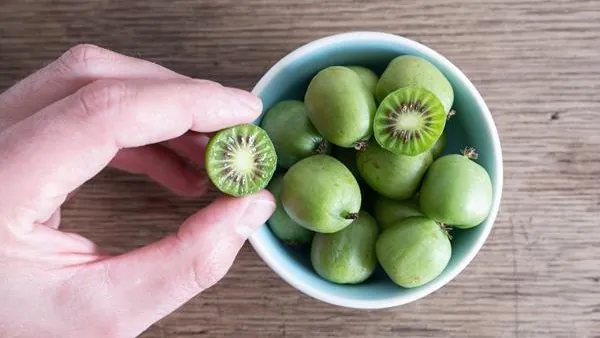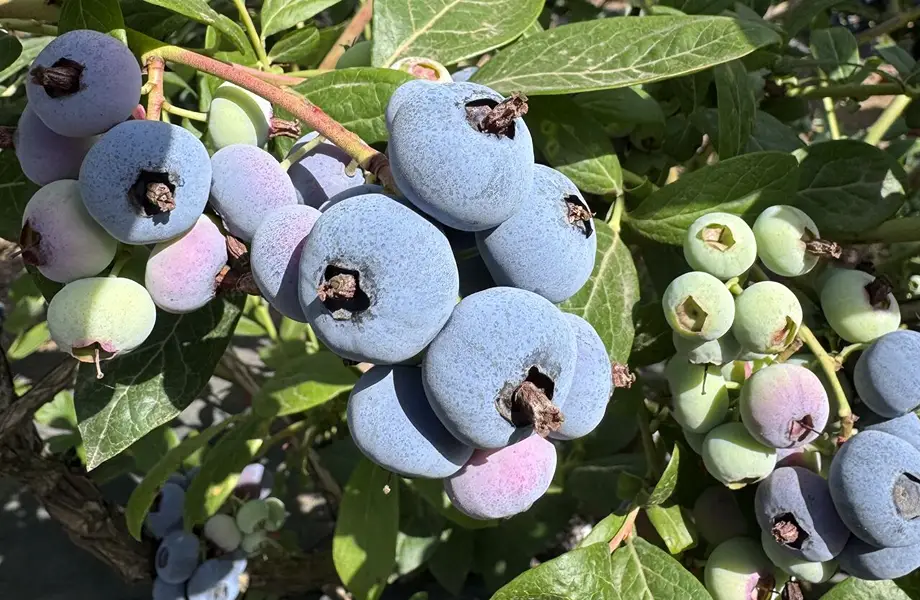blueberries are a difficult crop to grow because the plants do not readily absorb key nutrients and the berries can therefore vary in flavor, quality and size. With an increasingly demanding market, growers need to optimize plant nutrition to achieve a consistent crop that generates high prices. Lindi Botha spoke with Dr. David Marks.
blueberries is a relatively new crop for South Africa, and with new varieties arriving frequently, finding the right recipe for optimal production is not easy. At the same time, the price of blueberries is declining after peaking two years ago, which means farmers must get the most out of every input and every hectare to ensure their sustainability.
Unfortunately, their task is made much more difficult by the known inefficiency of the blueberry plant in absorbing calcium (Ca) and nitrogen (N), both key elements needed for a good fruit crop. Simply adding more of either nutrient will not solve the problem. Instead, growers are advised to review application rates and methods and different forms of the elements.
CALCIUM (CA)
Adequate calcium levels improve the quality and storability of blueberries. Low Ca levels, however, have much more to do with the crop than with fertilizers.
Dr. David Marks, founder of UK-based Levity Crop Science, says that to understand why Ca applications are inefficient, farmers need to understand three basic rules of Ca metabolism in plants: capacity, transport and uptake.

"Plants cannot store excess Ca as they can with other nutrients, such as potassium. When the Ca storage sites in the cell walls are full, plants precipitate the absorbed excess Ca. Fruit-deficient plants often continue to precipitate Ca from their leaves.
"Calcium is not mobile in the phloem, which means it must be transported through water into the plant. The movement of water in a plant is governed by transpiration and moves in only one direction: from roots to shoots. The areas of greatest water loss receive the greatest water flow and thus the greatest Ca supply.
"In addition, plant parts with high levels of auxin--a hormone that regulates plant growth--readily absorb Ca, while those low in auxin absorb little, regardless of the amount supplied. Ca levels are usually low in blueberries, due to the fact that the fruit is a low auxin tissue and therefore a poor Ca reservoir."
Part of the absorption problem lies in the low auxin level of ripening berries. When the fruit is young and small (less than 2 mm in diameter), the cells divide and the auxin level is high. But when the fruit starts to grow in size, cell division stops and the auxin level starts to decrease, leading to a limited ability to absorb Ca.
According to Marks, applying Ca to the soil is not advisable, as the Ca would bypass the fruit and be transported to the leaves, where transpiration is higher. But applying Ca directly to the fruit, except when it is very young, is also not recommended, because it will not be absorbed due to the lack of auxin.
The solution lies in the proper timing and placement of Ca applications. Marks explains that fruits absorb Ca best when it is applied between flowering and when fruits are 2-3 mm in diameter. Foliar applications made at this time will be more effective than those made later in the season.
NITROGEN (N)
The blueberry plant has metabolic and physiological peculiarities that influence nitrogen utilization and its effect on growth habits. The plant has no root hairs, which limits water and nutrient uptake.
In contrast, it has relatively large, shallow roots that serve mainly to anchor the plant and transport water, and thinner feeding roots that absorb and transport nutrients. However, these roots are short-lived, with a typical life cycle of less than 130 days.
This has a major impact on the crop. Because feeder roots die relatively early, it is critically important to manage the crop so that maximum root growth is achieved, as well as continuous root growth throughout the growing season.
"Second, perhaps less well known, root hairs are the main site of production of the cytokinin hormone, which promotes plant growth. Thus, the lack of root hairs in blueberries significantly affects crop production."
NITRATES
Another peculiarity is that the blueberry plant is less able to process nitrates than most other crops, having evolved in a low-nitrate environment. Technically speaking, it is unable to efficiently use the nitrate reductase enzyme system that plants use to convert nitrate N into protein to grow.
Unfortunately, Marks notes, this makes the use of conventional fertilizers in a blueberries crop highly inefficient.
"This is why blueberries growers are often advised to avoid the use of nitrate fertilizers and instead use sources of ammonium or urea N. But even this does not solve the problem, because N is not environmentally stable. Crop uptake of N bears little resemblance to N supply, as it changes between application and uptake.
"In most cases, crops absorb only 30-50% of the applied N. This is absorbed as nitrate, regardless of the form in which it is applied.
"Because blueberries andother ericaceae that prefer acidic soils lack the ability of other plants to process nitrate, foliar accumulation is rapid after nitrogen is applied to the soil. This leads to excessive production of the auxin hormone, which in turn encourages vegetative growth, with less energy directed to fruit formation, resulting in lower yields."
Marks explains that if auxin production is high compared to cytokinin production, the plant allocates more growth to shoot development or vegetative growth. Conversely, if the plant has a better ratio of cytokinin to auxin, it focuses more on reproductive growth or fruit development.
Therefore, the solution is the use of stabilized amine N, which can provide blueberries with the right balance of N for optimal growth and yield. The combination of the amine form of nitrogen (NH2), calcium (Ca), zinc (Zn) and amino acids, applied in small doses by foliar or drip spraying, changes the growth habits of the crop, resulting in shorter, more branched plants and better root development.
It also directs energy toward flowers and fruits instead of the classical nitrogen response, which results in vegetative growth.
Source: Farmer's Weekly
For further study:













